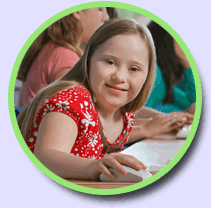Cohort 9 Technology Implementation Projects
Stepping–Up Technology Implementation
In October 2013, OSEP’s Educational Technology, Media, and Materials (ETechM2) for Individuals with Disabilities Program funded four Stepping-Up Technology Implementation Projects, which aim to promote the effective implementation of evidenced-based instructional and assistive technology tools in K-12 settings. These four projects comprise the ninth cohort of projects in the Model Demonstration Coordination Center.
The Stepping-Up Technology Implementation projects represent a range of technology intervention components designed to improve academic achievement, increase access skills, and other valued outcomes for students with disabilities
Features of the projects are the following:
Evidence-based technology tools that benefit students with disabilities
Resources needed to effectively implement evidence-based technology tools
Products that will help K-12 schools effectively implement these technology tools.
Specifically, the cohort 9 projects are developing
Professional development resources and implementation materials for the use of integrated behavior support and tablet technology for students with or at risk for emotional behavioral disturbance who show challenging behavior in elementary and middle schools
An online integrated instructional progress management system and professional development resources designed to help teachers use progress monitoring data to improve the mathematics instruction and achievement of students with disabilities in elementary grades
A communication matrix suite, including a virtual community of practice,for assessing children with severe communication disorders and developing appropriate IEP goals for communication and language instruction.
Collaborative online projects, integrating multiple types of e-text supports (friendly vocabulary definitions, text-to-speech, notetaking, guided questions, and reading prompts) that provide reading instruction on science content for middle school (6th-8th grade) students with learning disabilities.
|

